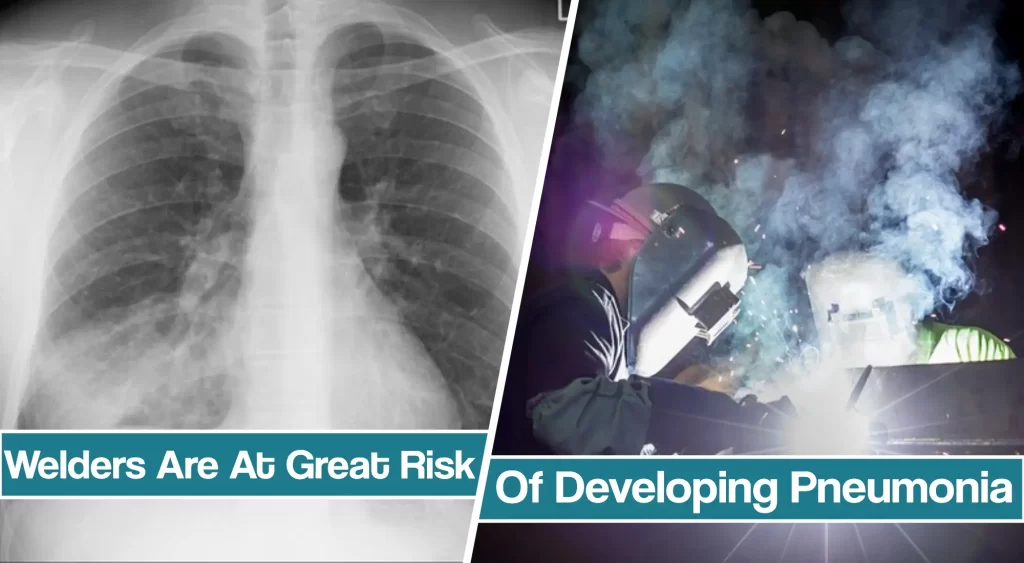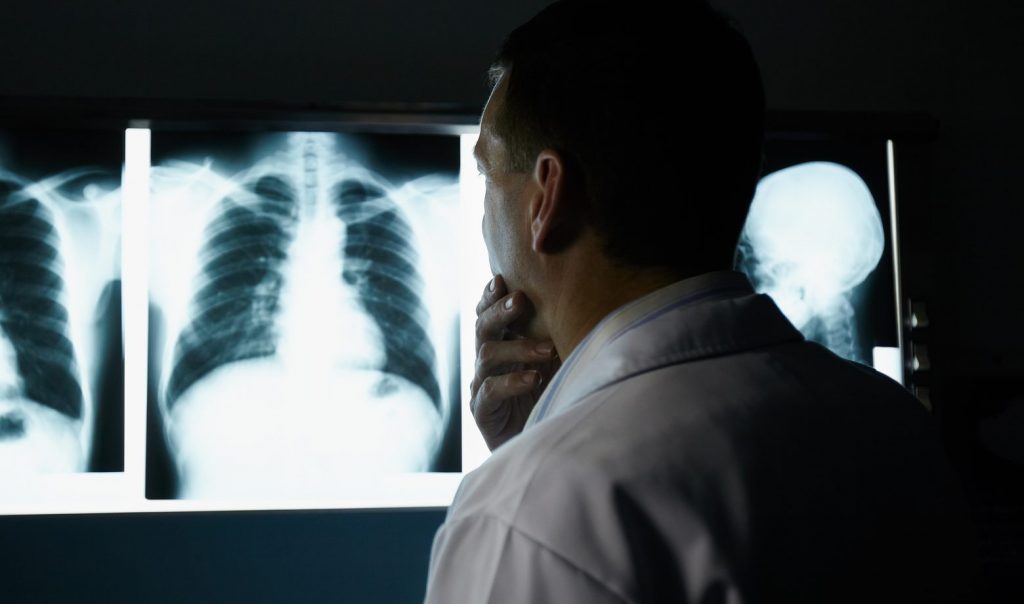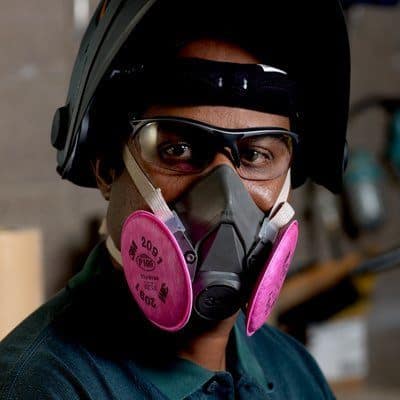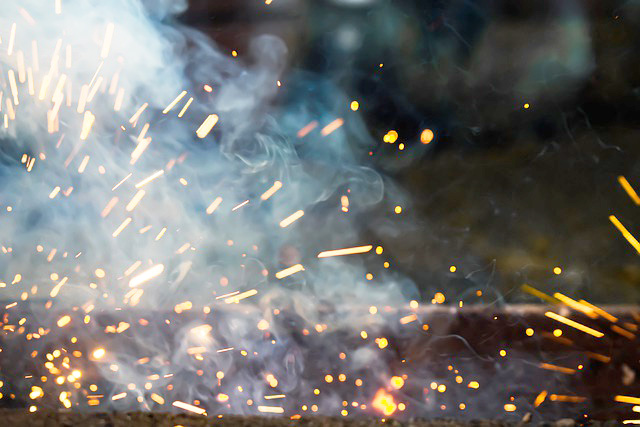Welding can be a dangerous occupation, as most welders and their supervisors know well. That’s why all the safety precautions, including proper PPE equipment such as welding helmets, respirators, gloves are mandatory.
Nowadays, no one disputes that welding fume endangers workers’ health in metal processing companies. However, recent studies have found that welders are at significant risk of infectious disease. The keyword is pneumococcus.

Experts are yet to determine the cause of the infection, but the vaccination emerges as a solution to preventing risk of pneumonia in welding.
Pneumococcal Pneumonia in Welding
Over the past 30 years, a growing body of evidence has linked exposure to metal fumes with a heightened risk of developing bacterial lobar pneumonia.
While researchers are not sure why this is happening, many consider particles in welding fumes are boosting the stickiness of pneumococcal bacteria. In addition, the studies indicate that pre-existing respiratory or immune system conditions, tobacco smoke, and old age can contribute to pneumococcal infection.
Pneumococcal are bacteria that are the most common cause of severe bacterial infections. This disease usually affects very young and elderly individuals and impaired immunity. They can lead to severe illnesses, including:
- Inflammation of the middle ear
- Pneumonia
- Meningitis
Pneumococcal pneumonia classically presents with sudden fever and malaise, pleuritic chest pain, cough with purulent or blood-tinged sputum, or dyspnea. In the elderly, fever, shortness of breath, or altered mental status may be the initial symptoms.
Pneumococcal meningitis is less common than pneumonia, and symptoms may include headache, lethargy, vomiting, irritability, fever, stiff neck, and seizures. See more.
Pneumonia Risk Studies
A review of the occupational health statistics by scientists at the Great Britain’s University of Southampton has been published in the journal Occupational Medicine.
The first studies were conducted using the Office for National Statistics data on deaths by occupation in England and Wales ranging from 1991-2000, then later on 2001-2010. What did they show?

In 1991-2000, deaths from pneumonia among welders were significantly more common than in other workers. To be exact, 3234 workers died from pneumonia between 1991 and 2000.
Between 2001 and 2010, 2863 men aged 16-74 died from pneumococcal and unspecified lobar pneumonia. Once again, the research was conducted using all job categories, but welders stand out from the crowd. Finally, the published study shows that welders of working age were more than 3.5 times as likely to die from pneumococcal pneumonia as men in other jobs.
The latest studies estimate that breathing metal fume at work leads to 40–50 welders being hospitalized each year due to any form of pneumonia. Unfortunately, approximately two of these patients die each year from the disease.
How To Prevent the Risk of Pneumonia in Welding?
Even today, many employers are unaware that exposure to welding fume can cause pneumonia. But unfortunately, even though fatal cases are rare, they can occur. So the question that emerges is how do you prevent the risk of pneumonia in welding?
Experts state that awareness is crucial. Companies need to advise workers how to reduce their exposure to fumes as much as possible. In addition, they should encourage them not to smoke.
The general opinion is that prevention is better than cure. Following that logic, experts recommend the Pneumococcal polysaccharide (PPV23) vaccine to prevent fatal lung disease potentially.

Some consider that the benefit of providing vaccinations is likely to be comparable to that of taking aspirin for a year to avoid a heart attack or cardiac arrest
Employers choosing to run a vaccination program are suggested to:
- make arrangements for a vaccination with a reputable occupational health provider;
- explain to employees that the vaccine does not offer protection against other illnesses caused by welding or metal fume, such as asthma;
- the vaccination does not guarantee worker’s safety from pneumonia and that the vaccination may have a limited duration of effectiveness;
- all the other control measures remain necessary.
The Health and Safety Executive (HSE) in Great Britain states that vaccinations should be necessary for high-risk groups of welders. Most often, high-risk groups are smokers, older workers, or those in a clinical risk group.
Finally, appropriate personal protective equipment (PPE) is necessary. Proper protection will minimize exposure to hazards that cause serious workplace injuries and illnesses. In addition, welders need to follow other safety advice to reduce exposure.
To control the risk of toxic fumes, welders should:
- Avoid or reduce exposure
- Use local exhaust ventilation (LEV) to take the fume away at the source
- Use suitable respiratory protective equipment (RPE), for example, a facemask, to protect workers from inhaling fumes
Problems in Reducing the Risk of Pneumonia in Welding
Experts say pneumonia is not just a disease of older people. It can strike at all ages.
One of the problems of reducing the risk is that there are not enough research studies that specify a quantity of exposure to gases or metal fume that will increase susceptibility to pneumonia.
Since there is a lack of confirmed studies regarding the exact amounts of exposure, the vaccine is optional for employees.

However, regulations state workers should not be pressured into having it or discriminated against if they choose not to. That’s why enforcement action is not taken against employees who have not implemented a vaccination program.
Many experts think that regulatory bodies around the globe should consider making the offer of vaccination for welders mandatory.
On the other hand, problems occur when vaccinated workers think they are completely protected by welding fumes and disregard their protective equipment. Research institutes make it unequivocally clear: Vaccination does not release employers from their obligation regarding other protective welding equipment. If fume exposure is not well controlled, employers cannot rely on the vaccine and implement effective control measures.
Final Thoughts
While fatal cases are rare, the risk of pneumonia among welders remains. Therefore, the prevention of the risk is crucial but also pretty straightforward.
Proper fume exposure is crucial in reducing the risk of diseases. However, when fumes are not well controlled, vaccination may be critical in preventing pneumonia in welding.
While vaccination is not mandatory or prescribed by any regulations, experts consider vaccines can potentially prevent fatal lung disease. Therefore, you should never forget that prevention is better than cure.
Sources:
- https://wwwnc.cdc.gov/travel/yellowbook/2020/travel-related-infectious-diseases/pneumococcal-disease
- https://www.hse.gov.uk/pubns/eis44.pdf
- https://www.sciencedaily.com/releases/2014/10/141015190830.htm
- https://www.occupationalhealthltd.co.uk/blog/pneumonia-vaccination/
- https://www.workershealth.uk/pneumonia-vaccination-and-exposure-to-welding-and-metal-fume/




